- Home
- Military & Defense
- After Action Report
- The US Navy And Allies Showed Iran Who Really Controls The Strait Of Hormuz
The US Navy And Allies Showed Iran Who Really Controls The Strait Of Hormuz
Every once in a while there comes a spot on the planet able to wreak all sorts of havoc on the world's plans

Right now it's the 21-mile-wide Strait of Hormuz, which accommodates a third of the world's oil and faces constant threat from Iran's marine mines
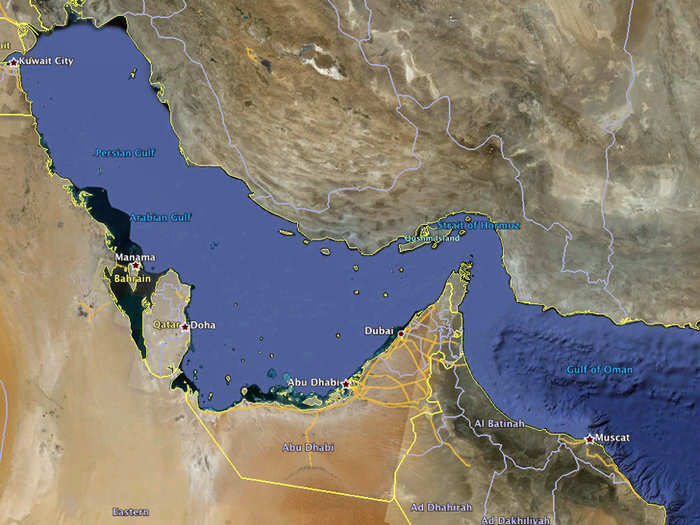
If this were a novel, we'd say here that 21 miles are all that stands between peaceful commerce and untold havoc
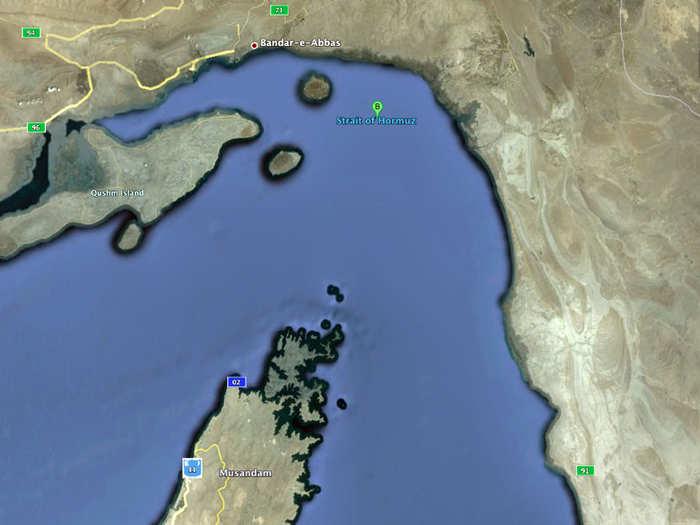
Standing between Iranian ambitions to mine the strait is the USS Ponce — a forward afloat base snatched from the scrapyard by James "Mad Dog" Mattis himself
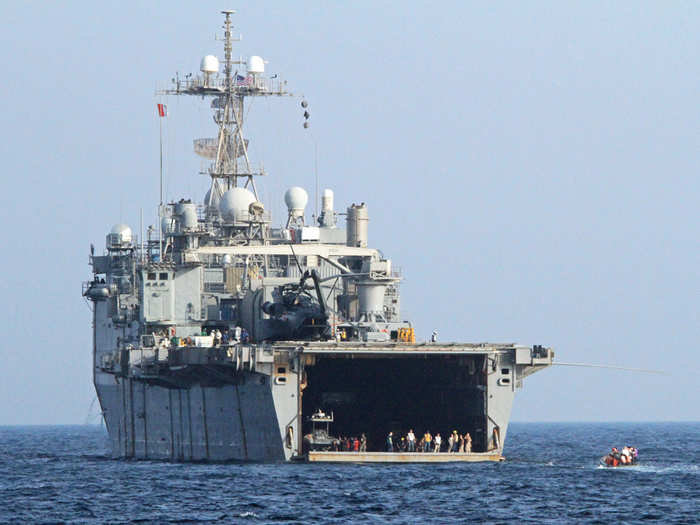
Supporting the Ponce are at least four Avenger class mine countermeasures ships never far from the Iranian coast
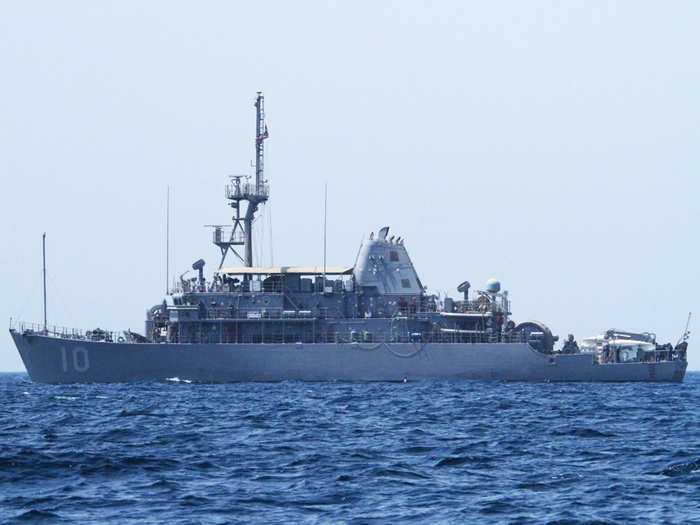
Avengers have wooden hulls and fiberglass shells; they're beautifully old-school with low acoustic and magnetic signatures — a couple of details that keep them from exploding in an unexpected minefield
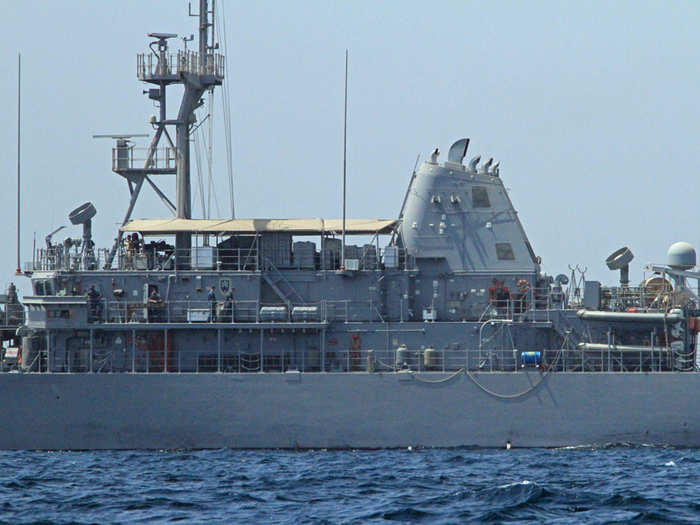
Ideally the ships will have an Arleigh Burke DDG destroyer laying down 360-degree radar and defensive protection, but there's no guarantee
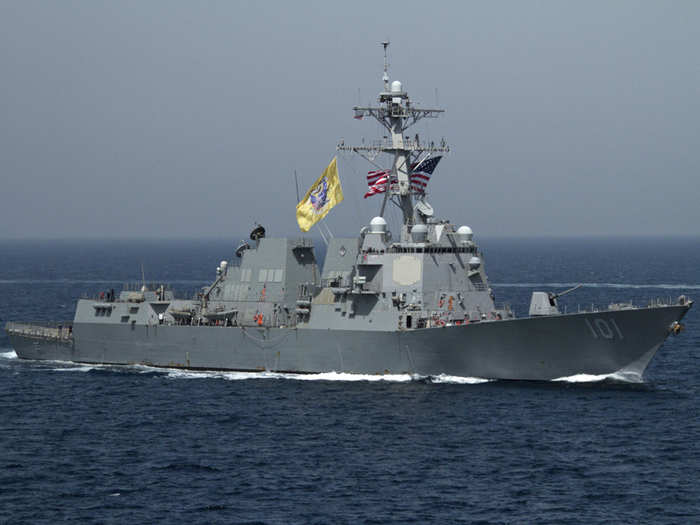
Because in addition to the mines, the US fleet will have to watch for heavily-armed Iranian speedboats
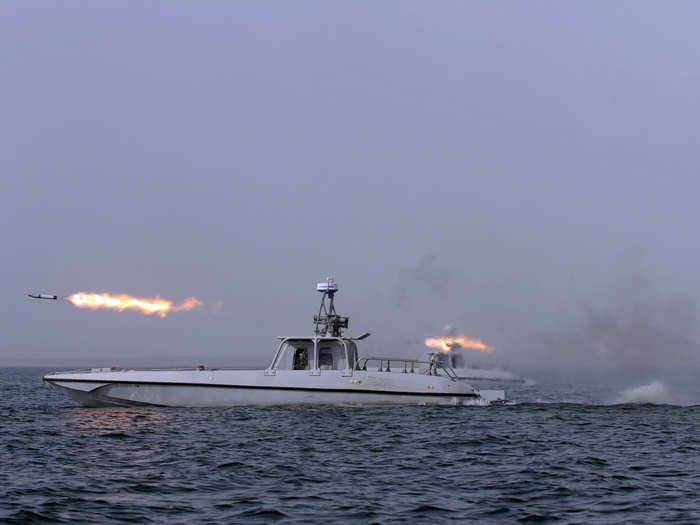
And Iranian crews trained in swarming techniques that could bypass US Navy defenses
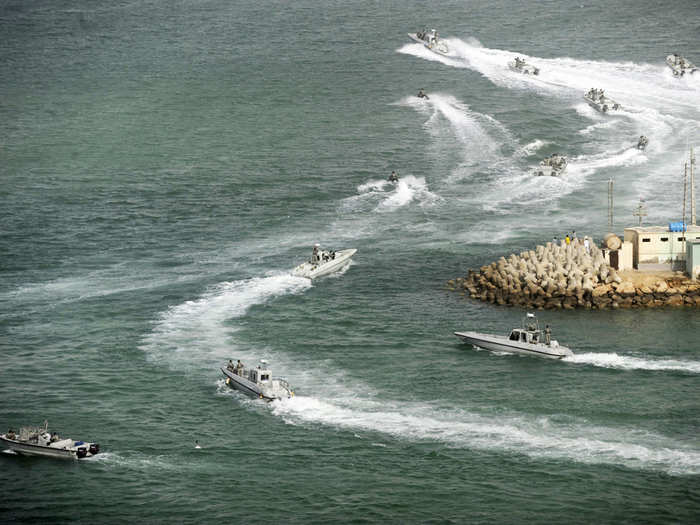
On the plus side, If Tehran's boats are made of metal they can be picked up on radar and dealt with at a distance

But if made of wood they'll offer no radar signature, and if disguised as fishing boats they could slip past the most advanced radar perimeter
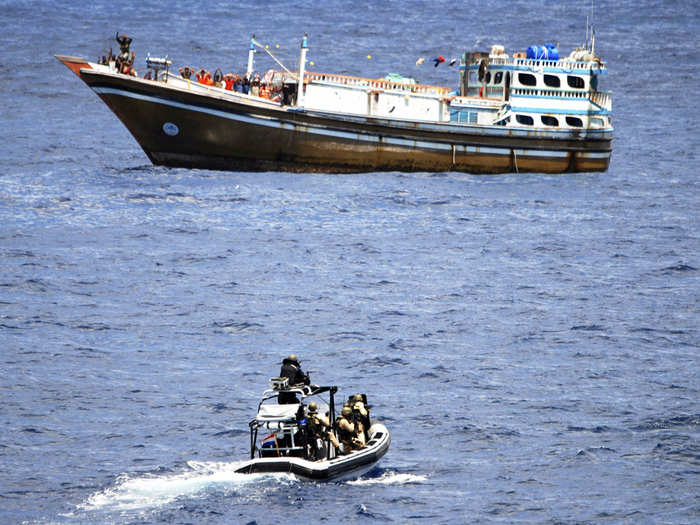
These are the concerns of every senior officer in the Gulf — especially those on the Ike — the carrier supporting most every US vessel in the region
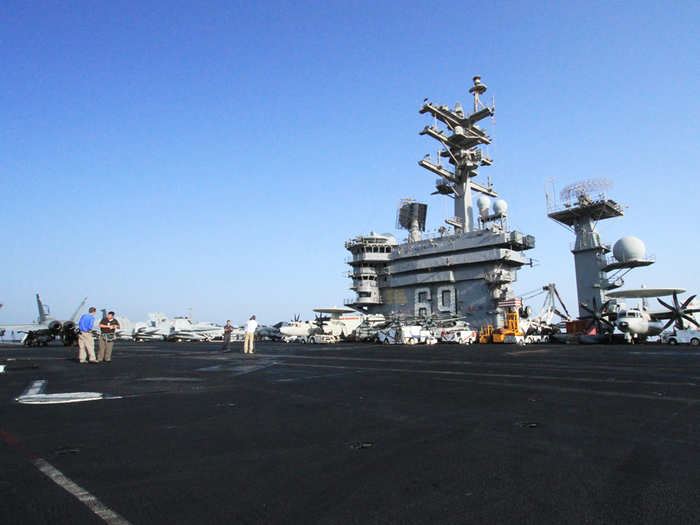
Able to sling dozens of F/A-18s into the skies within moments, carriers are the prize should missiles start to fly -- everyone here knows it
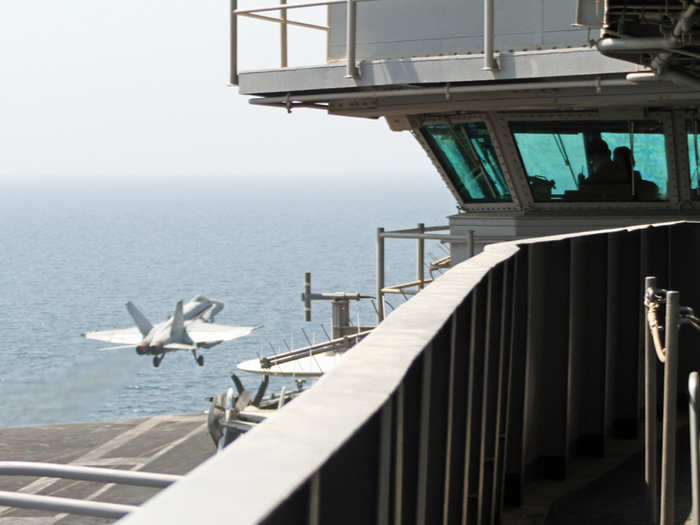
That's why even for routine surveillance missions, the jets are very well-armed
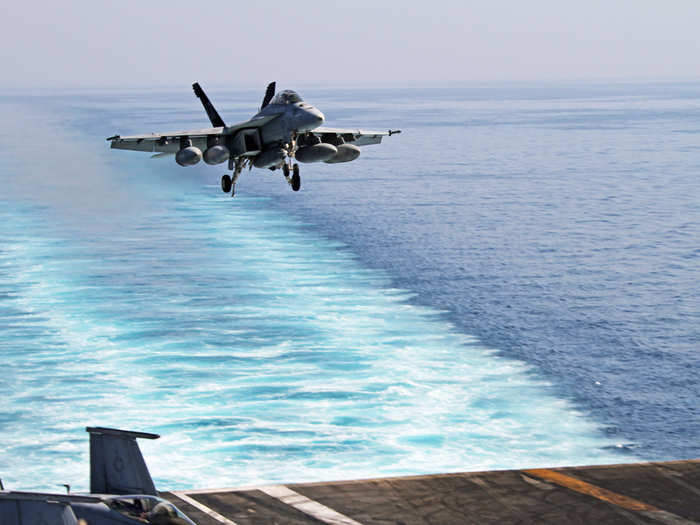
With AIM-120 AMRAAMs and AIM-9 Sidewinder missiles
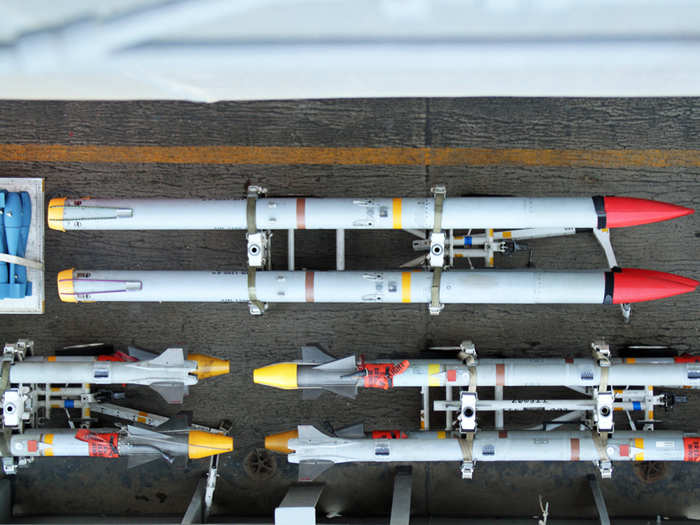
Which offer a nice complement to sets of Aim 7 Sparrow missiles
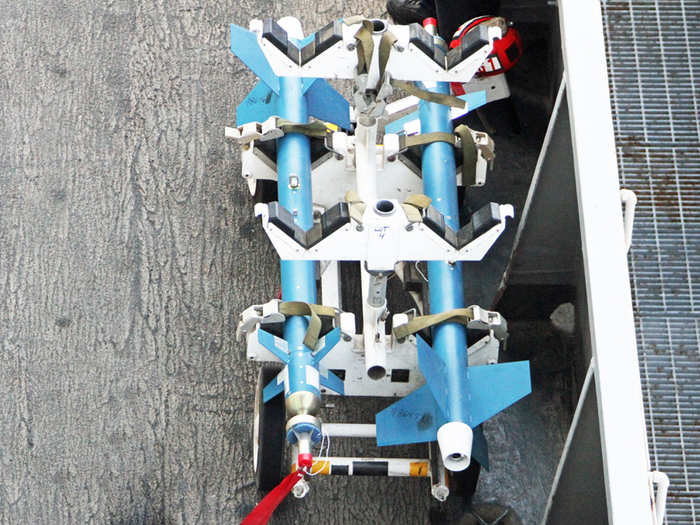
And all do a lot to ensure both laser, and GPS guided, JDAM smart bombs find their targets when needed
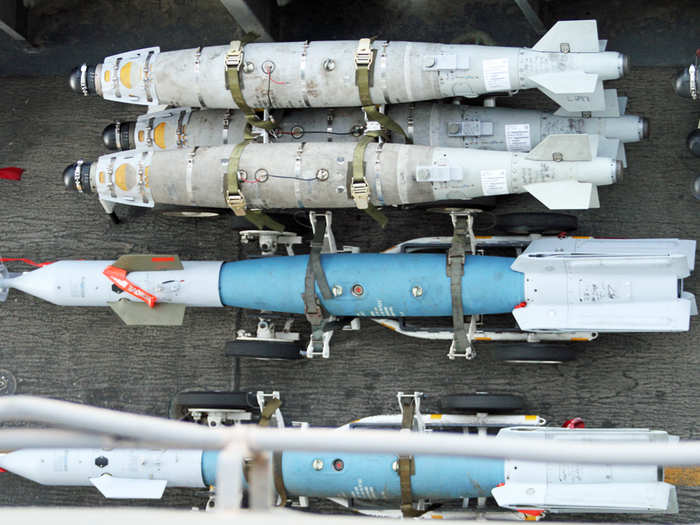
And just to stay sharp, the Strike Eagles fly with Mark 76 practice bombs that mimic the trajectory and strike performance of much larger bombs
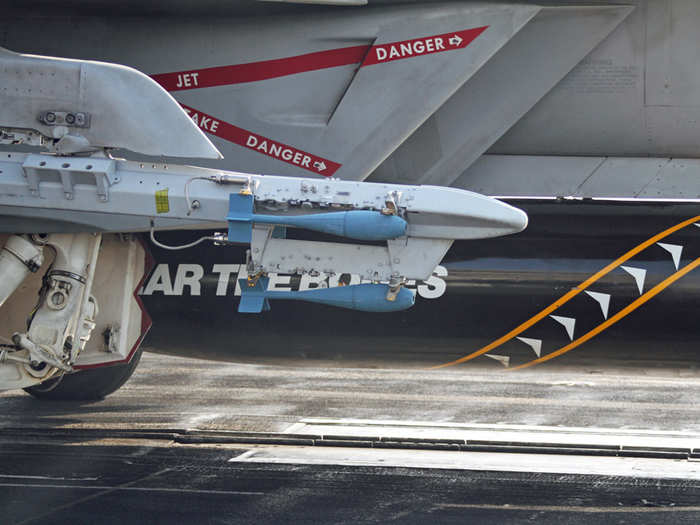
Before the 2012 mine clearing we received 5th Fleet's boss Vice Admiral John Miller, "The Iranian Navy has been professional and courteous in all our interactions." And yes, he's aware of new speed boat tech but refused to comment.
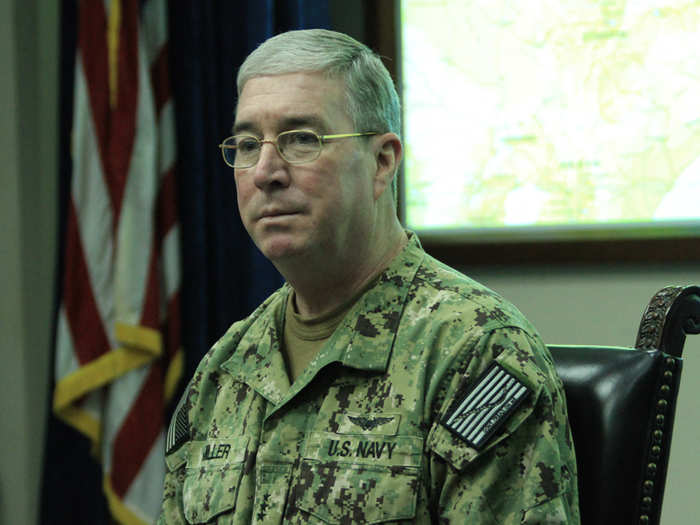
But Admirals don't have to answer much outside the halls of the Capitol and even here on the Ike, the admiral has his own bridge, seen here at night. Cigar ashtrays are optional.
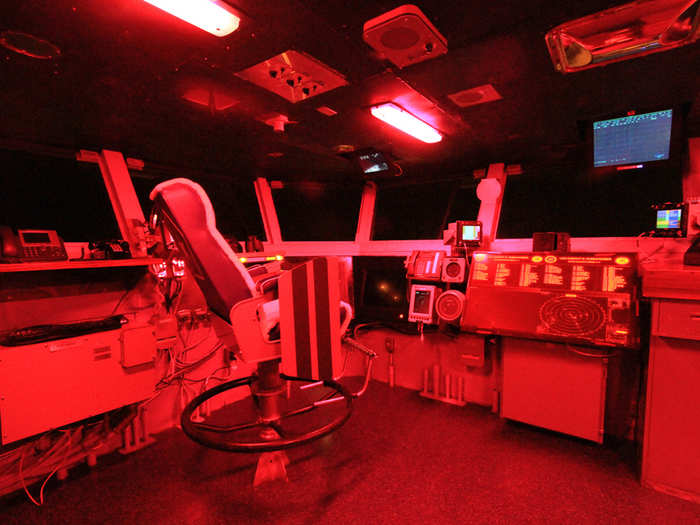
It may have been frustrating for Admiral Miller knowing the ship leading this week's international exercise isn't actually assigned to his detachment
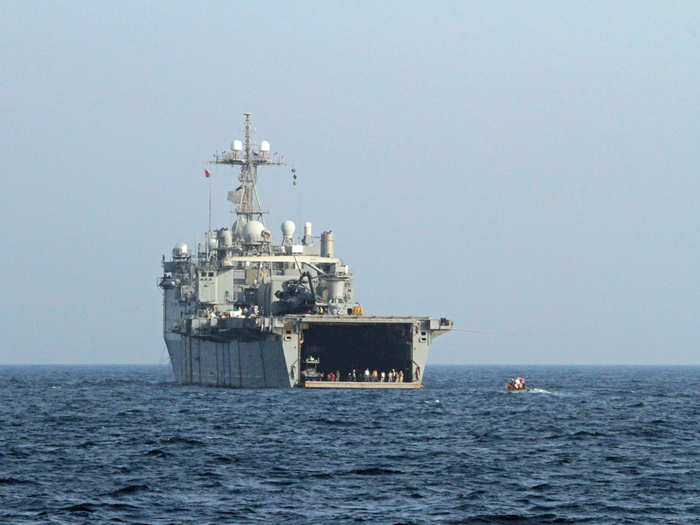
The US is looking for a ship like this last seen dropping marine mines in the Persian Gulf on Iran's behalf
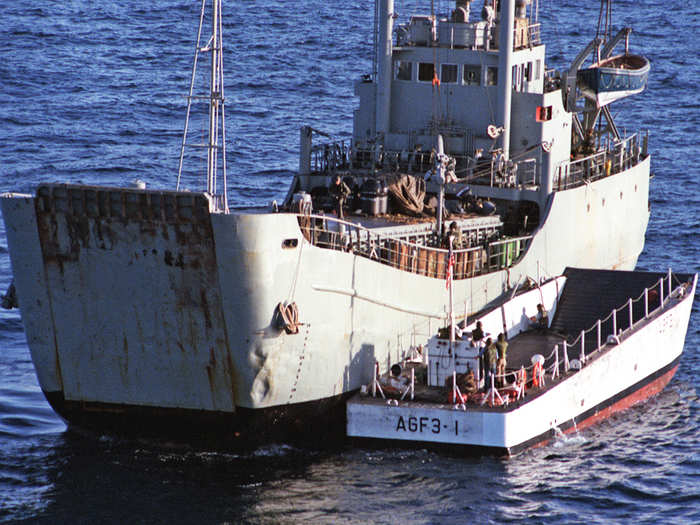
But it's not only the Ponce out here this week for the international exercise; in this shot, the Japanese ready the Uraga for our team to visit
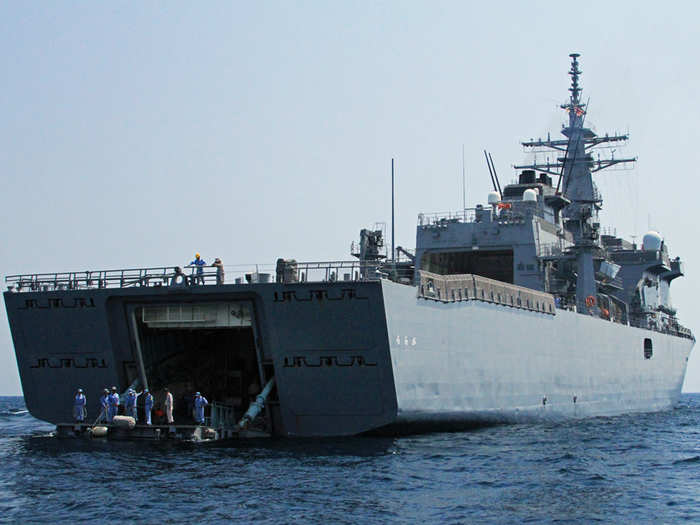
The Uraga is fantastically different from the 41-year-old Ponce but strikingly the same in its capabilities, like the well deck seen here
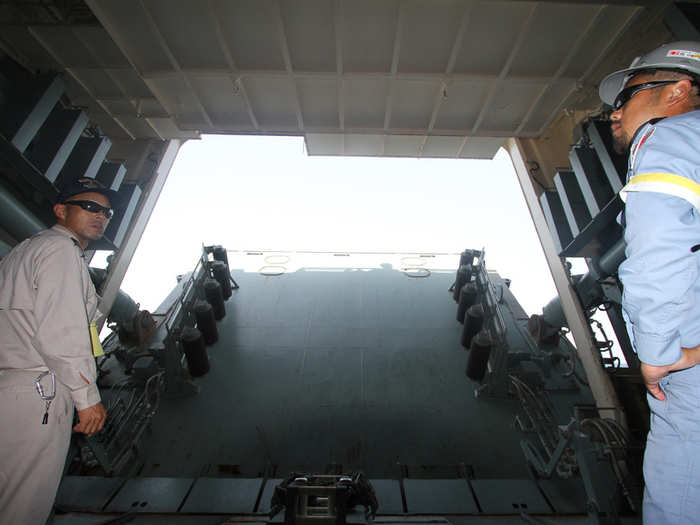
While the Japanese vessel was different in almost every way from a passenger's perspective
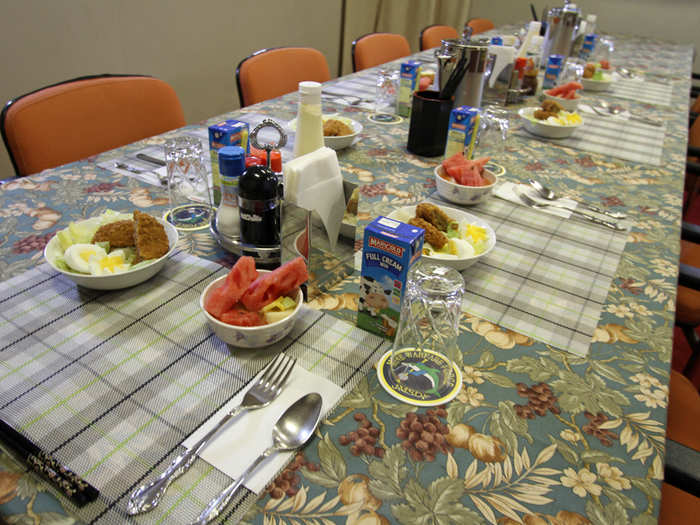
The electronics and the crew's proficiency were nearly identical to US troops
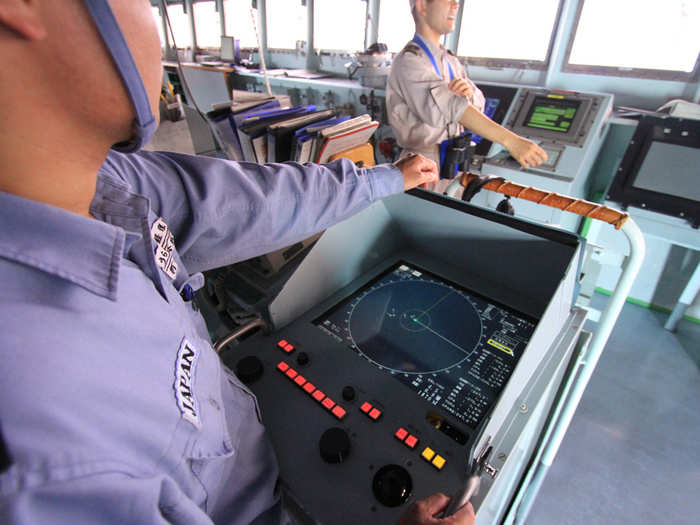
The charting station is similar to those on US ships and the thermal printouts are all in English
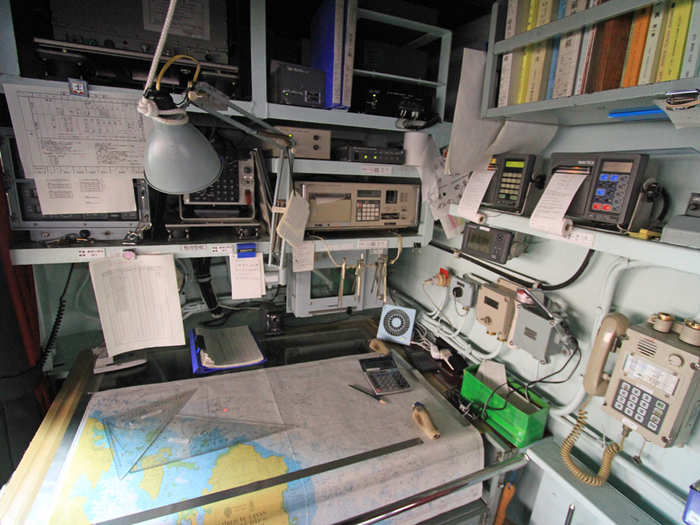
The radar stations seem to be older and less sophisticated than US systems, and the captain told me he had 1st generation sonar while the USS Warrior had fourth
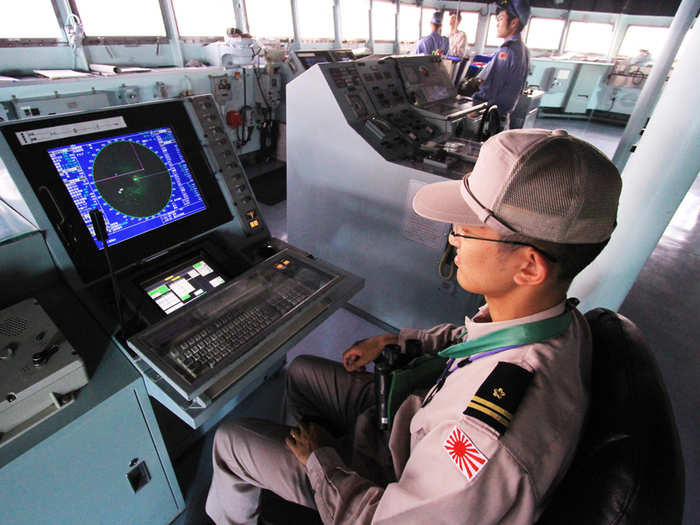
Radio commands were coming in via English and it was interesting to see Japanese nationals answer back in clear American accents
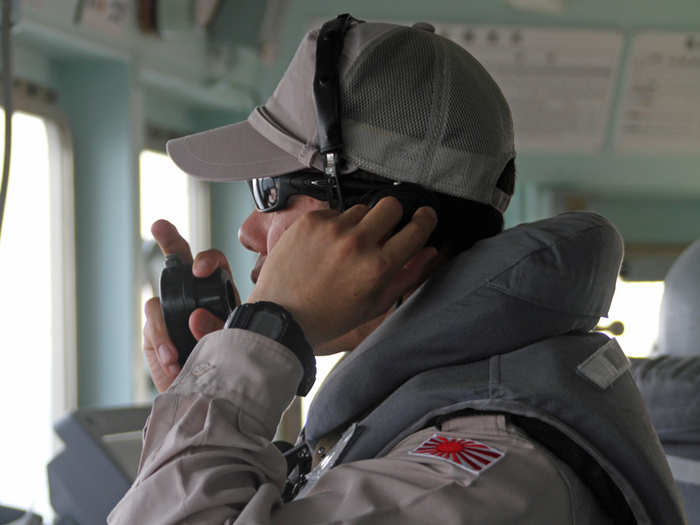
The Brits also sailed in support of the mission and offered the Japanese Captain a hat during this lull in the maneuvers
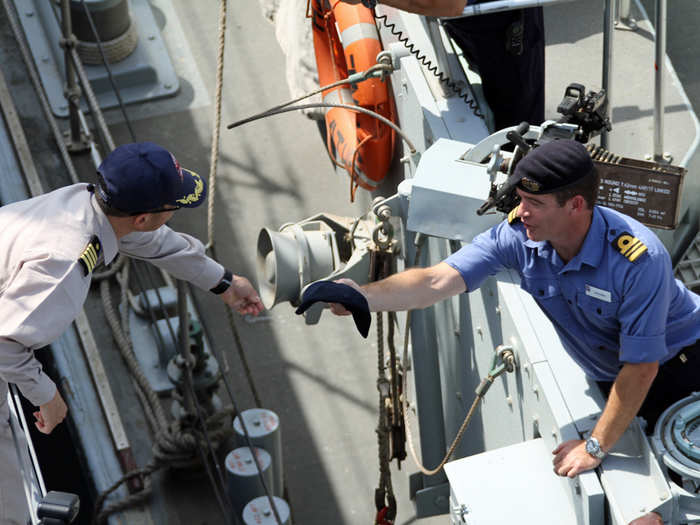
Following that exchange our Nipponese hosts put us aboard the mine sweeping vessel Uraga to see how the Imperial Navy might address mining challenges in their own waters
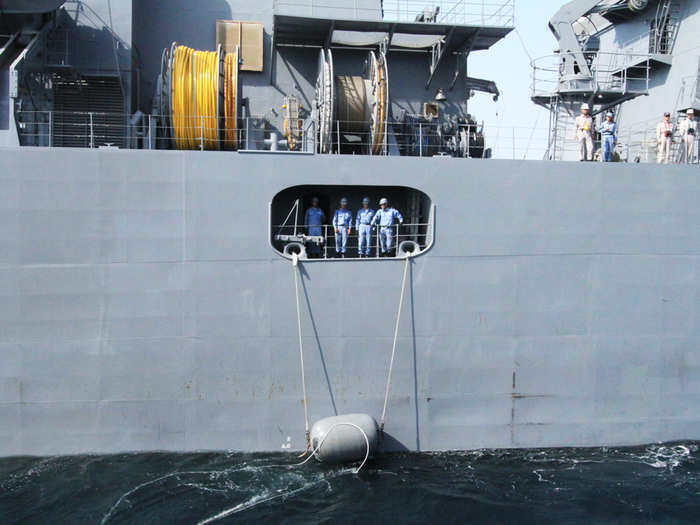
We were aboard only a moment when the crew were called to battle stations
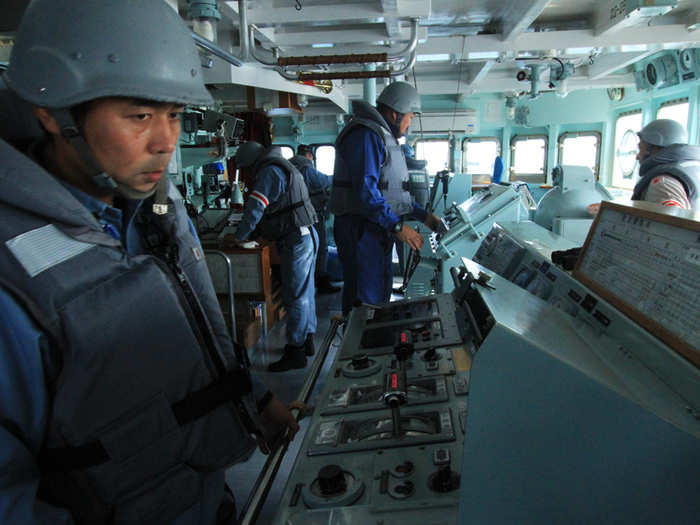
On their way to launch the underwater drone many sailors paused before this shrine beside the stairs
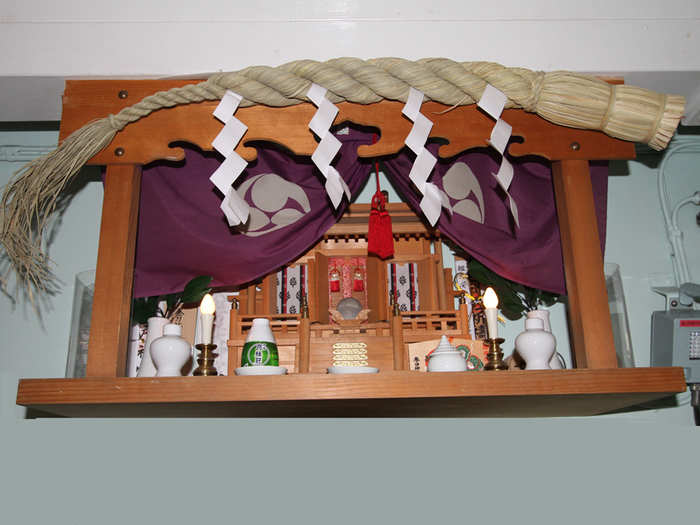
Placid just seconds before, the Uraga's crew assumed control of the MK-105 mine sweeping device and readied it for submersion in seconds

Unleashed from its restraints, the sailors guide the unmanned submersible over the side
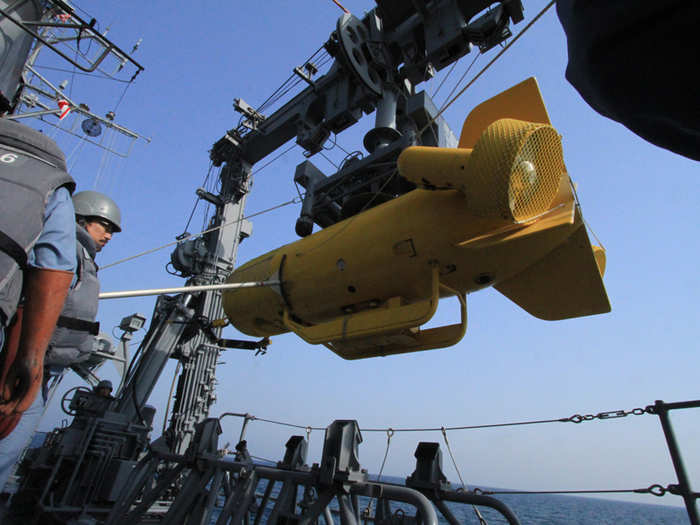
From there the massive crane spools out the cable needed to slip the drone into the warm waters of the Persian Gulf
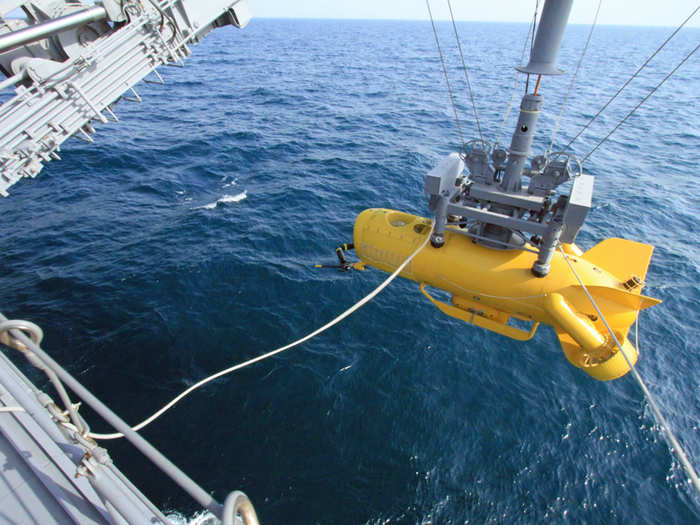
Once the MK-105 hits the water and powers up, the hoist is retrieved and the data cable is let out
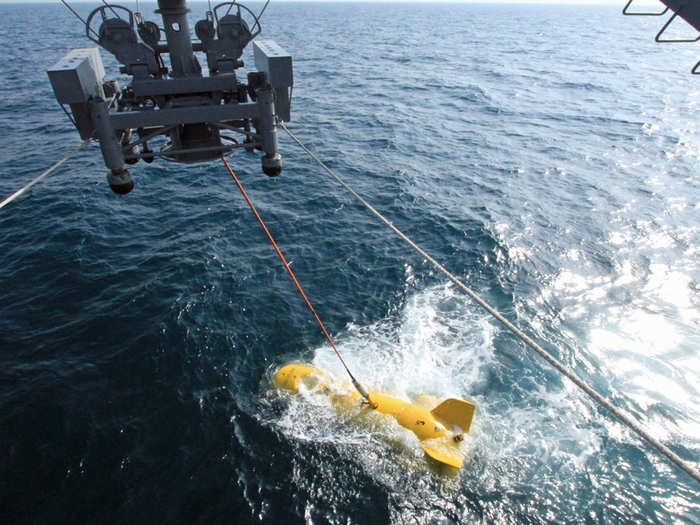
And then it's underway hunting for mines while remotely controlled from a space off the bridge
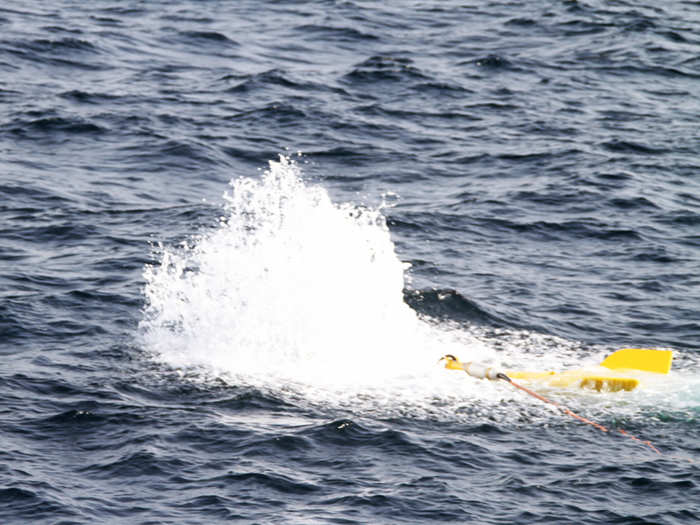
It disappears within seconds
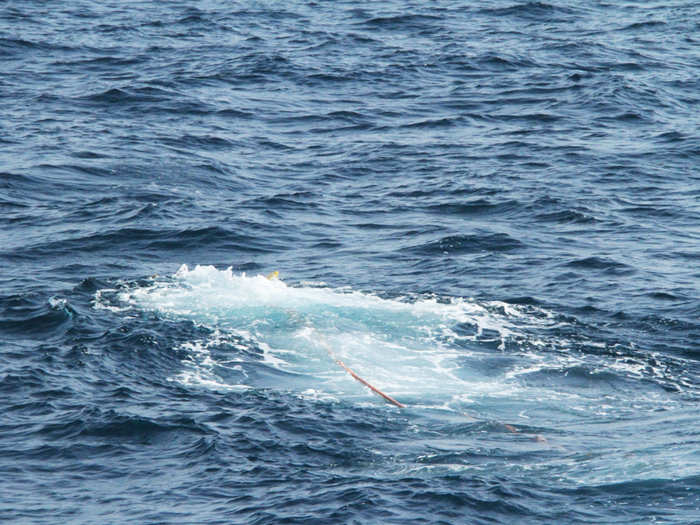
In a genuine magnetic mine environment the next step would be deploying these steel grids behind the ship attached to a charged steel cable
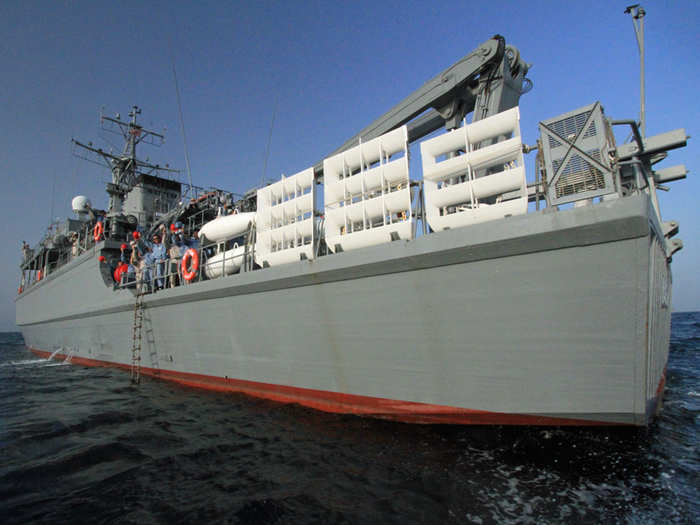
These cables would trigger a magnetized mine into blowing far and away from the ship's hull
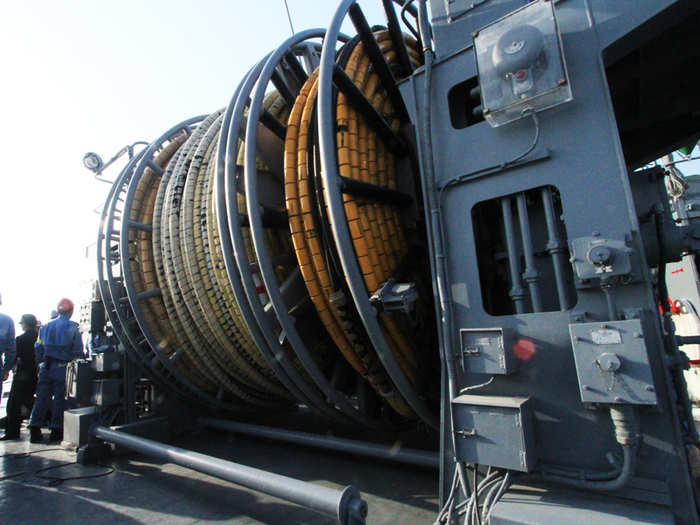
But to maximize their value, the cables would be rigged through a series of floats like this
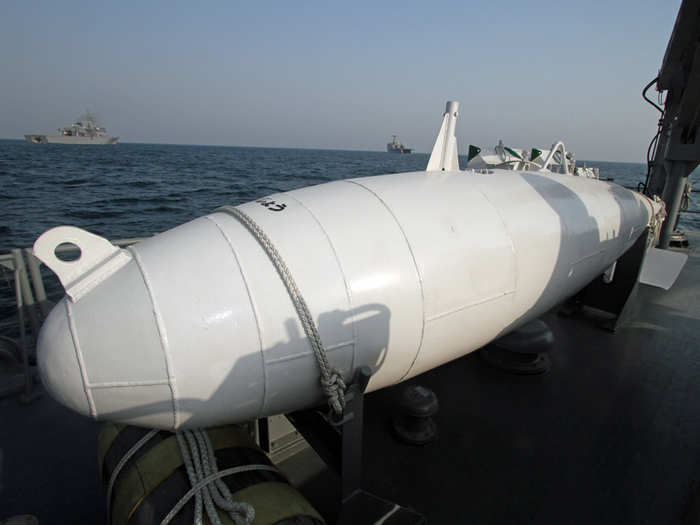
Looped from far port to far starboard in a magnetically charged lasso trailing behind the ship
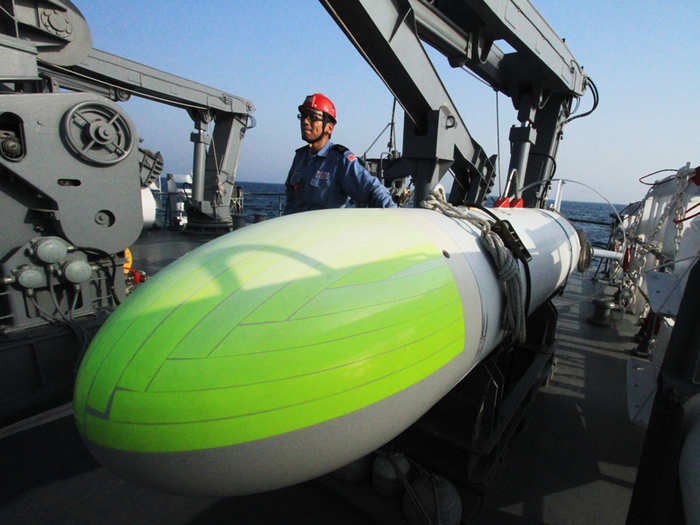
This underwater guide would help keep the shape of the charged cable while it trawls the mined waters
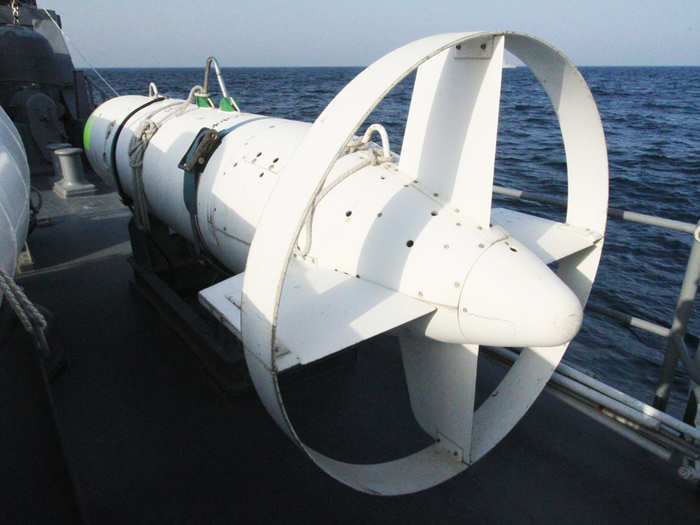
And something like this weighty anchor would hold the lowest portion of the lasso down and allow the loop to keep its shape as the ship trolled for mines
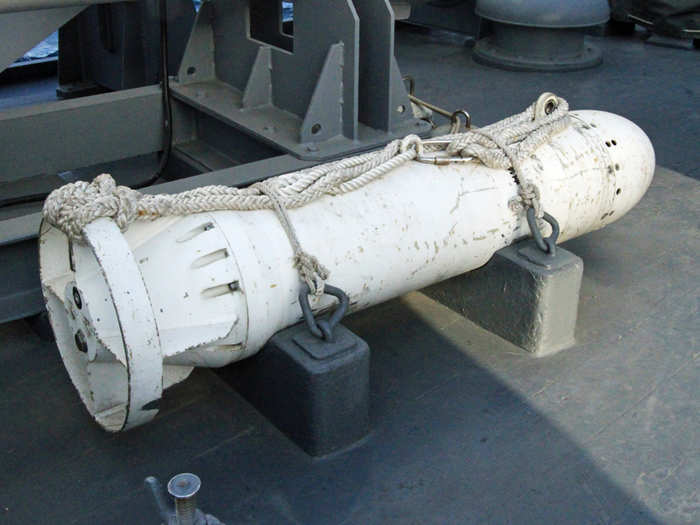
All that rigging is handled through this series of pulleys and guide-arms aft of the ship
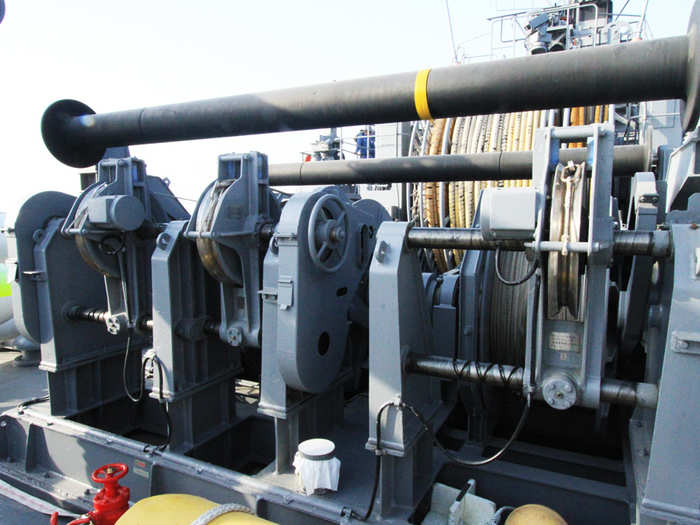
The magnetic field generated by the plates, buoys, cables, and weights will detonate magnetic mines that may look like these dummies found on the USS Eisenhower
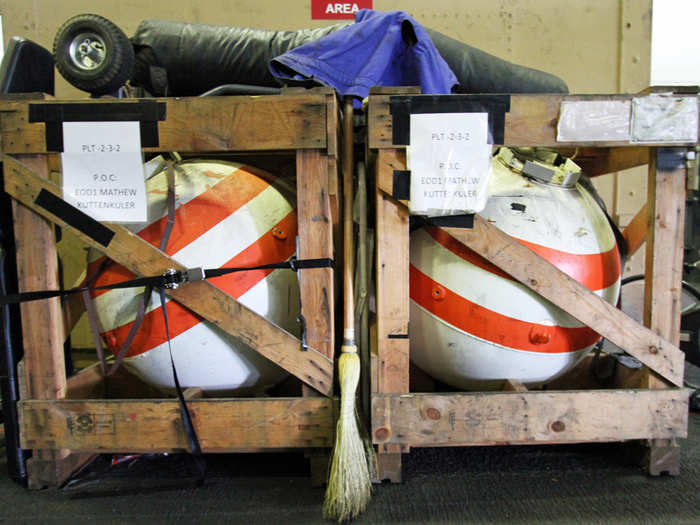
As a point of interest only, it's astonishing the various types of boots worn by Japanese sailors

And how ill-kept they appear in contrast to the rest of their uniform
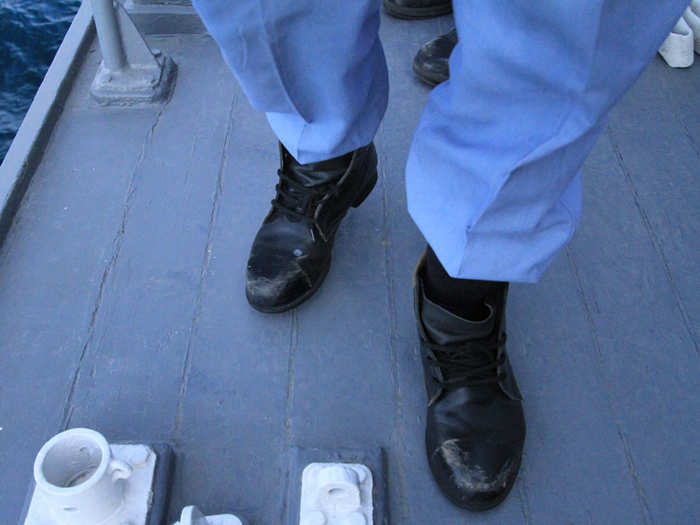
After getting the full rundown on the MK-105 from the Captain, we're shuffled off to our US Navy transport back to the Ponce
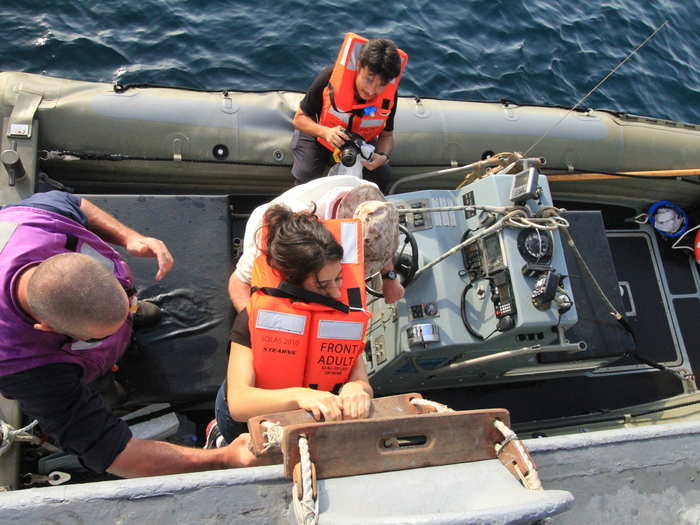
We're there in minutes as the Ponce XO bumps the throttle and sends a refreshing wake over all of us
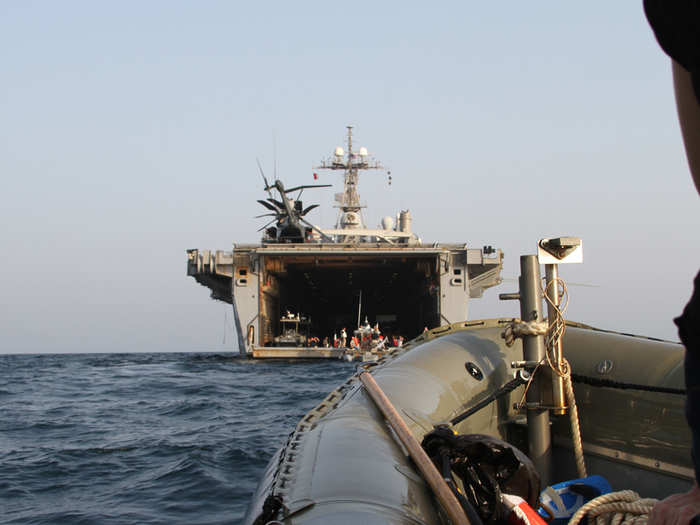
Back in the Ponce's well deck is Admiral Allen fielding questions from some annoyed members of the media who want to know why they haven't seen any mine clearing going on...
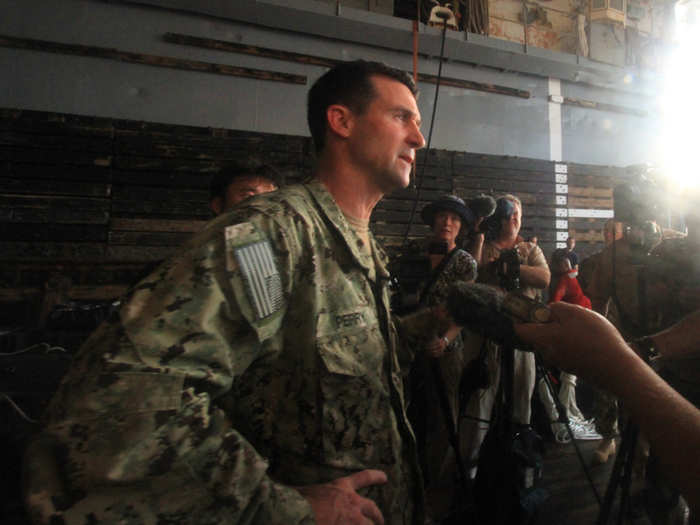
I split off looking for what's been going on aboard the Ponce while we were aboard other ships, and find this MH-53E Sea Dragon on deck
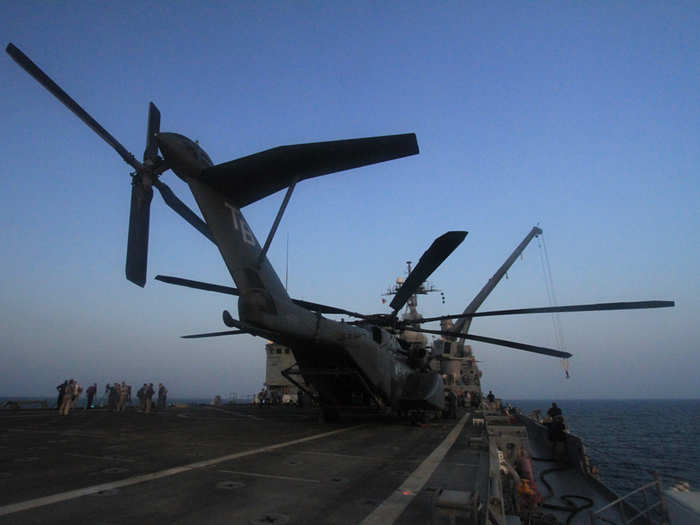
Inside I find the MK-104 mine sweeping device that complements the MK-105 we'd just seen on the Japanese ship
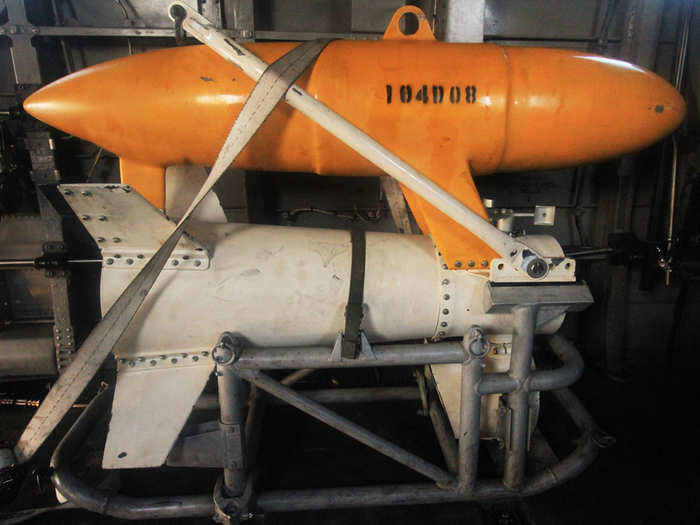
I grabbed pictures of the 104 and its steel and video cables before getting booted by flight crew — nicely though, they even apologized
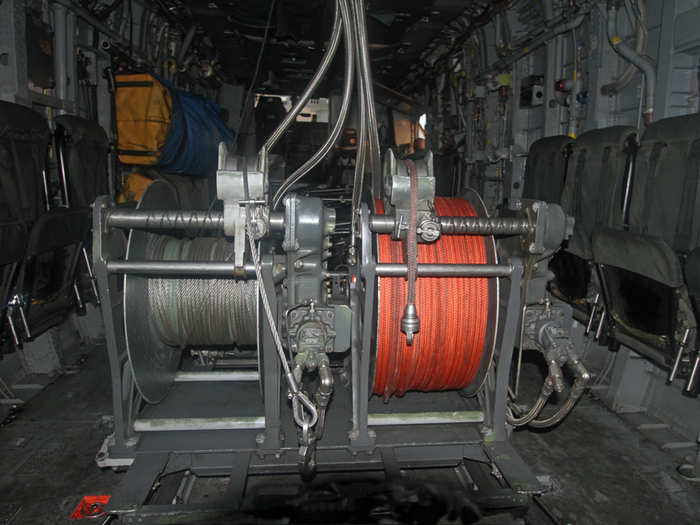
The Sea Dragon was still sitting there the following morning, prepped and ready to fly
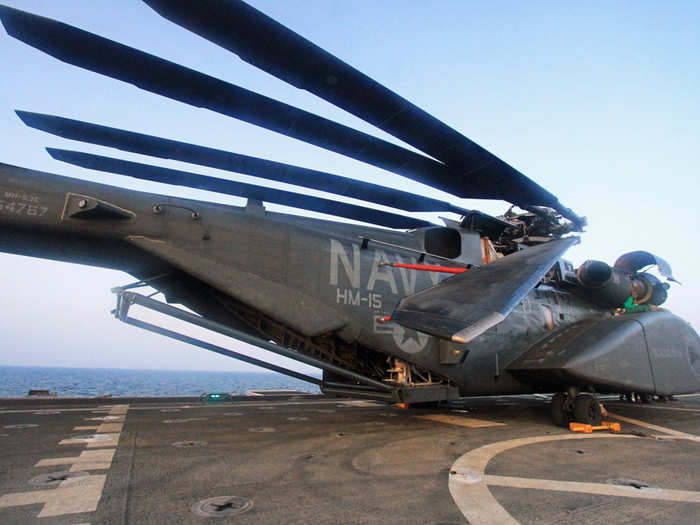
I'd actually come up during the night to see the crew washing it down and prepping it for today's mission, so I had an idea we'd be getting to see it in action
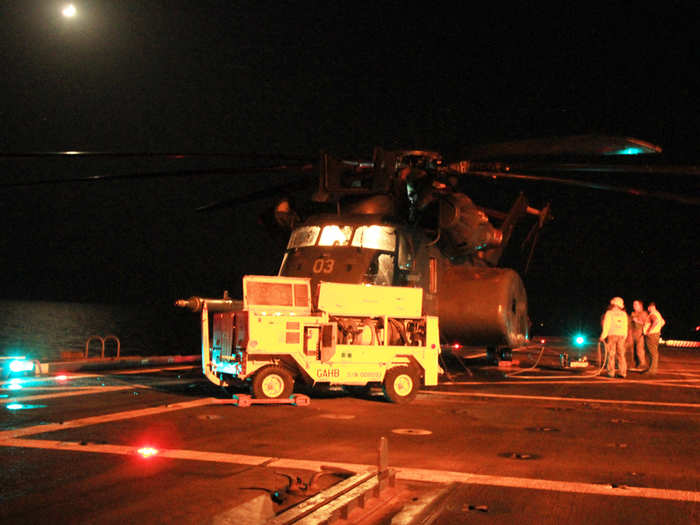
But before anything, the ship's eyes were put into the sky — the Scan Eagle drone shoots from the deck via 600 pounds of pressurized air and can maintain 20 hours of flight on just 1.5 gallons of gasoline
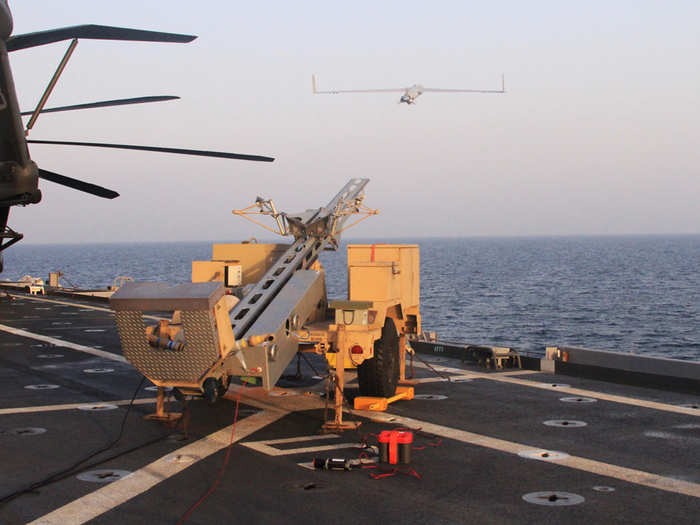
Most mine clearing is done in two parts and almost always requires a dive team — here the French team is prepping for their mission. That's a cinnamon Pop-Tart there the dive leader just set down on the box.
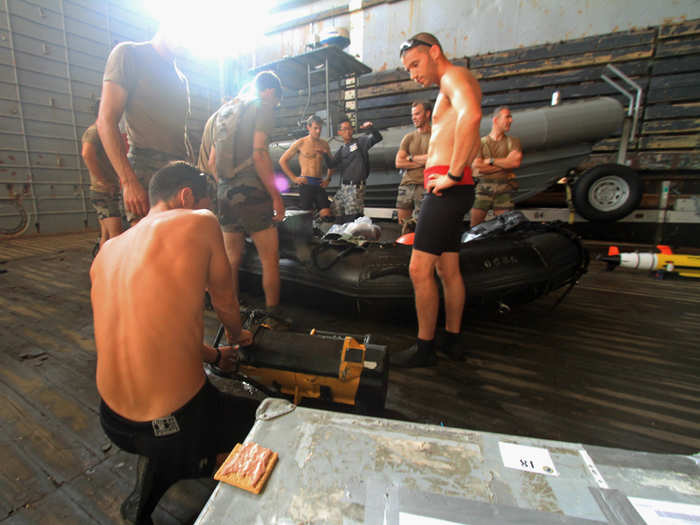
Back up on deck military and civilian crew are preparing to drop the D-Rib boat into the Gulf with two REMUS 100 submersible mine hunting drones
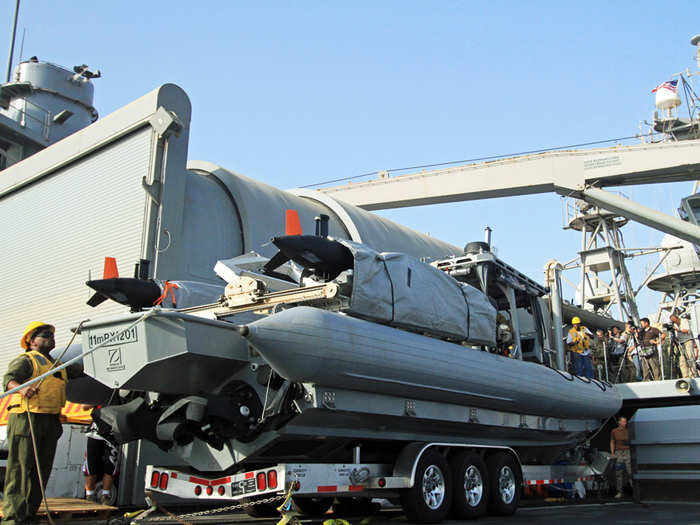
The REMUS has side sweeping sonar that can cover a trail about 60 meters wide
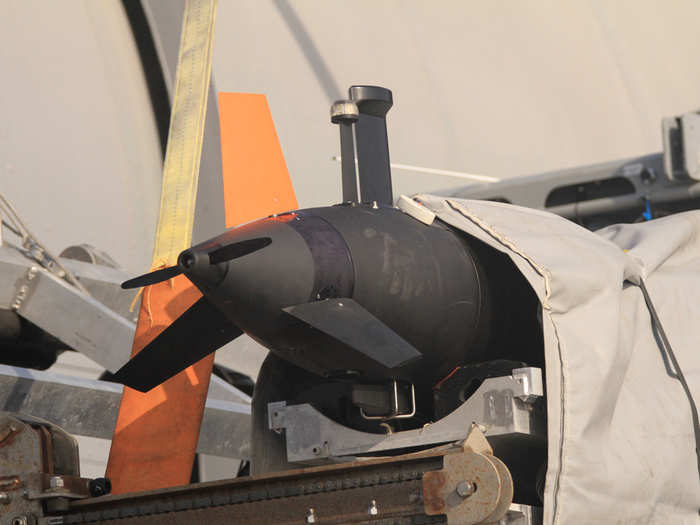
Once the boat's in the water and the crew have affixed the US flag and necessary antennas they're on their way
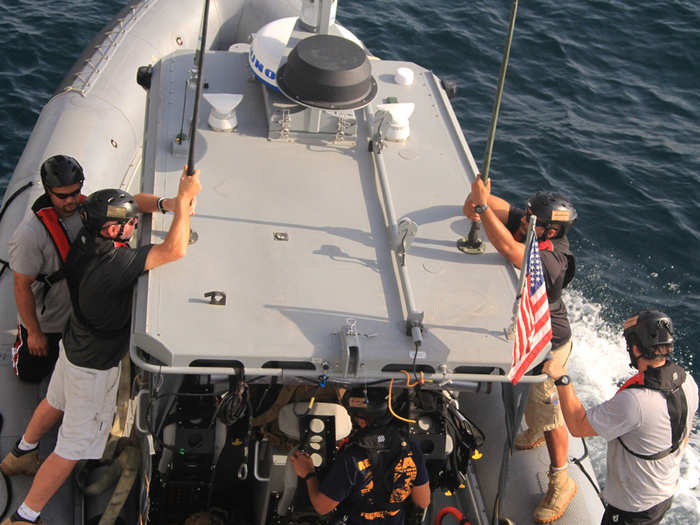
They're headed out to receive the dive teams that'll follow shortly and the two elements will work together to locate, identify, and neutralize the mocked up mine threat
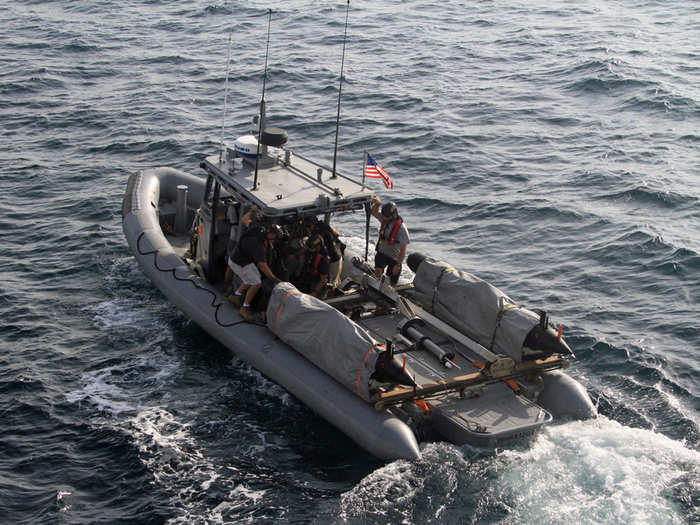
Back in the Ponce's well deck, diving crews are hauling their Zodiacs to the sea
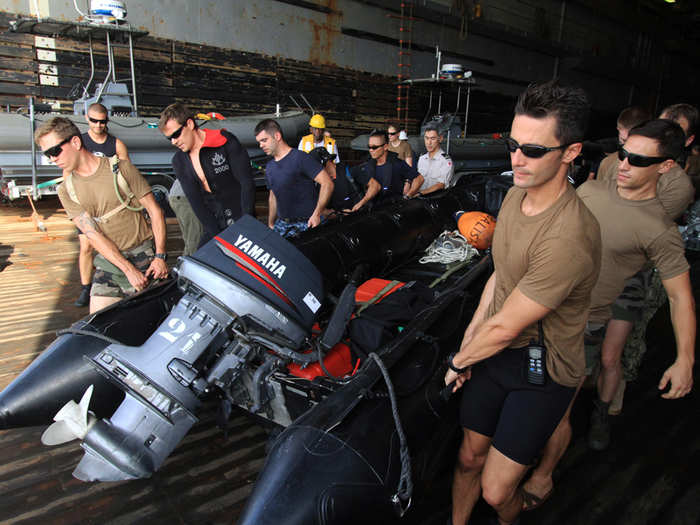
And shoving off after the American boat that left a few moments before
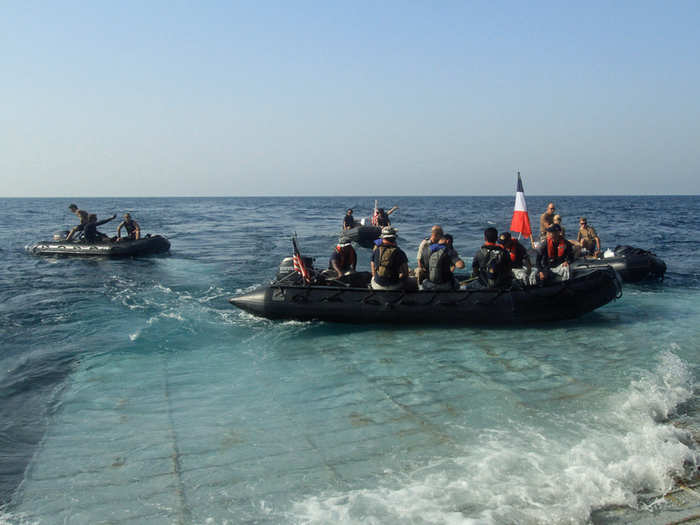
From above, the Scan Eagle starts feeding back live and close-up images of how the teams are faring about seven miles from the Ponce
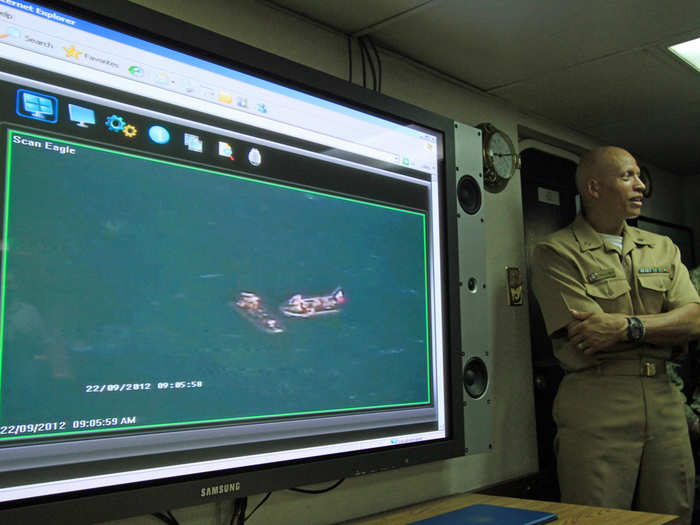
As the final piece of today's hunt goes to work, we're called topside to see the MH-53E that'd I'd been kicked off of floating starboard of the ship
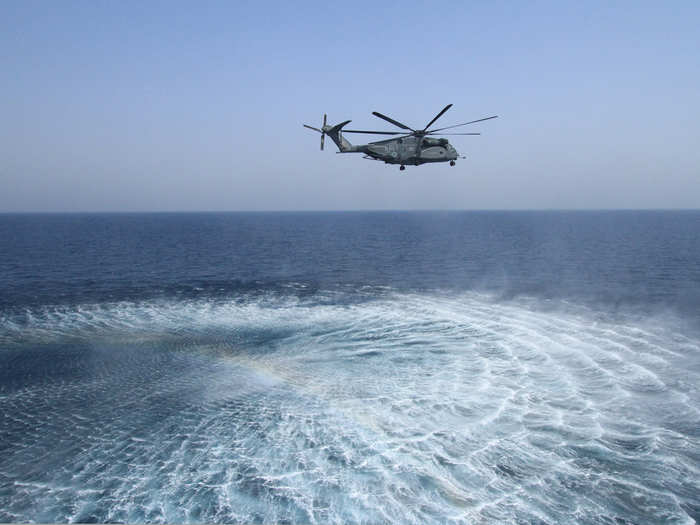
Inside crew slowly let the MK-104 into to water and set their equipment up in preparation for monitoring
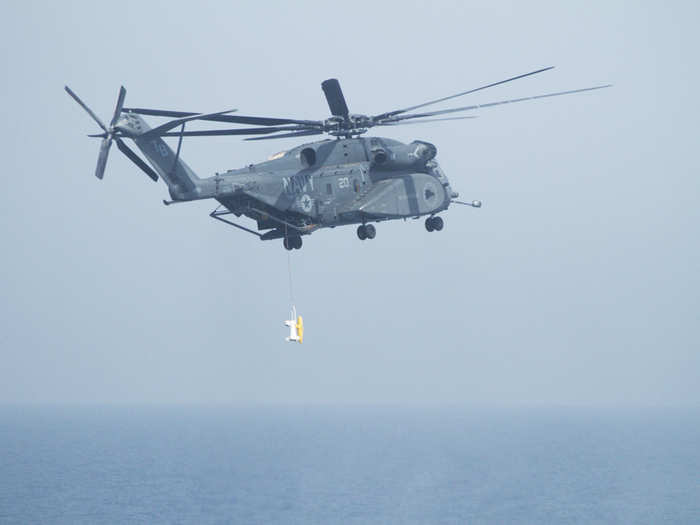
The 104 will be towed by the chopper via that line -- it's kind of hard to see so I filtered this shot hoping it'd be easier to find
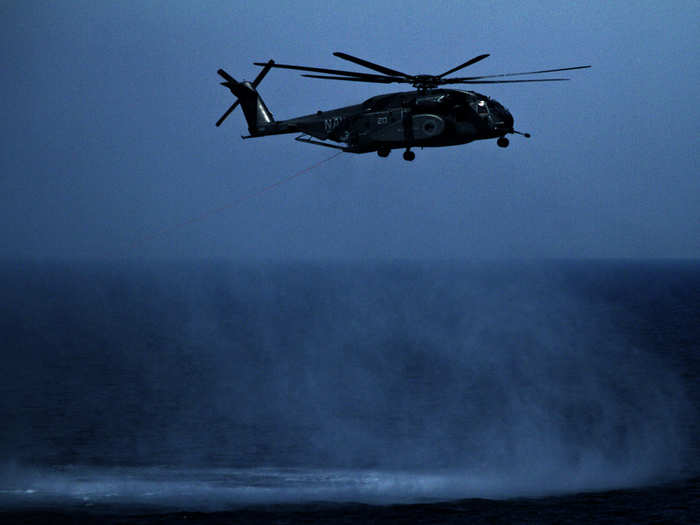
While all this is going down, visual surveillance is constantly applied — radar only works so well, especially on the region's wooden boats that radar wont pick up at all
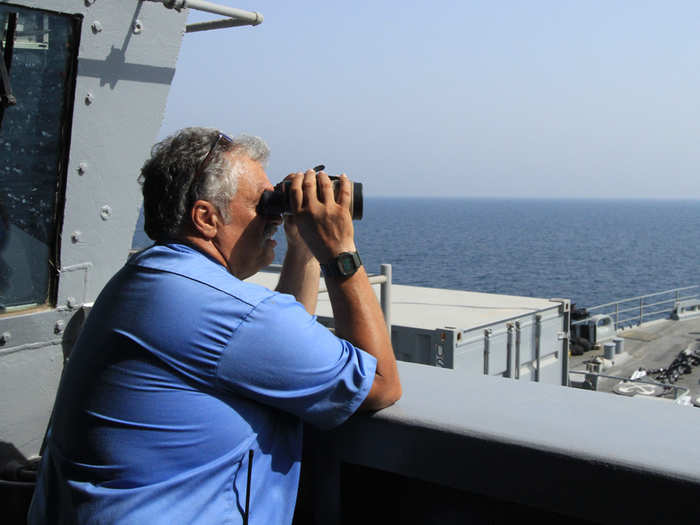
The dive teams are crucial to mine clearing, not only because they can visually confirm a mine, but they also report back water conditions like salinity and other factors valuable to achieving accurate sonar readings
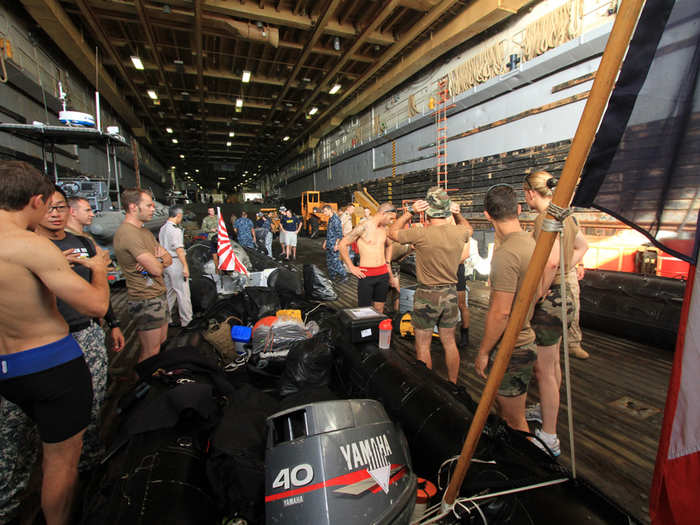
Once everyone is either in the air, or in the water, I make my way to Mission II where the data from the hunt is being sent for review and am re-introduced to the coolest Netherlander I ever met
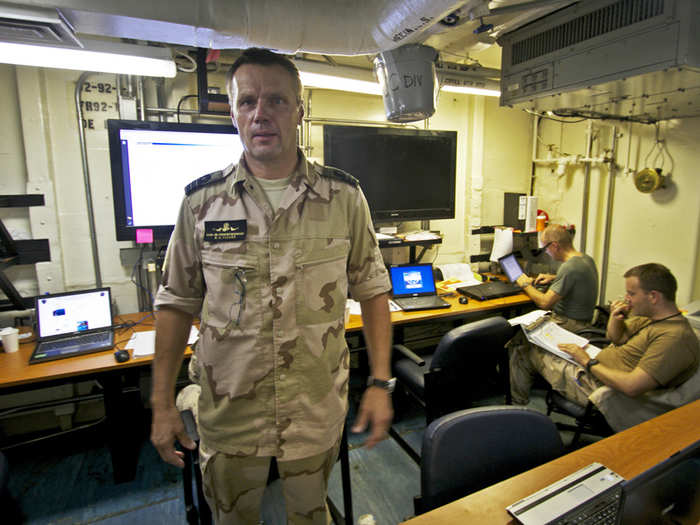
He's the dive master in charge and outlines where his teams will be submerged
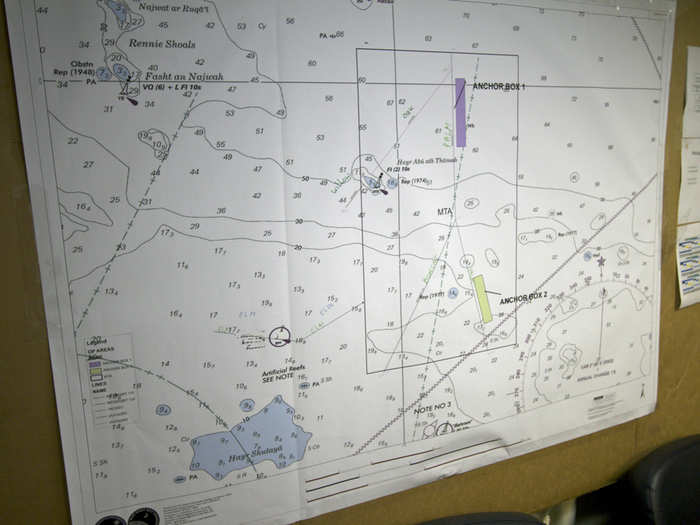
And highlights how the submersible REMUS vehicles will interact with the teams and where they'll work in relation to each other
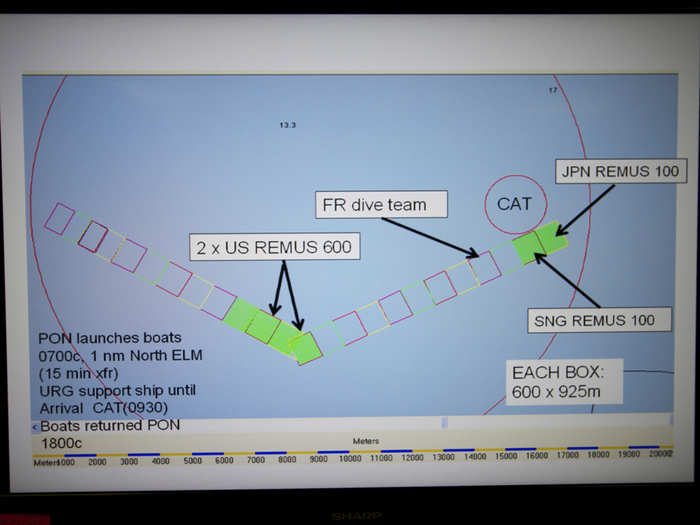
Finally the dive master shows me an example of the 60-meter-wide side scan sonar picture picked up by the REEMUS
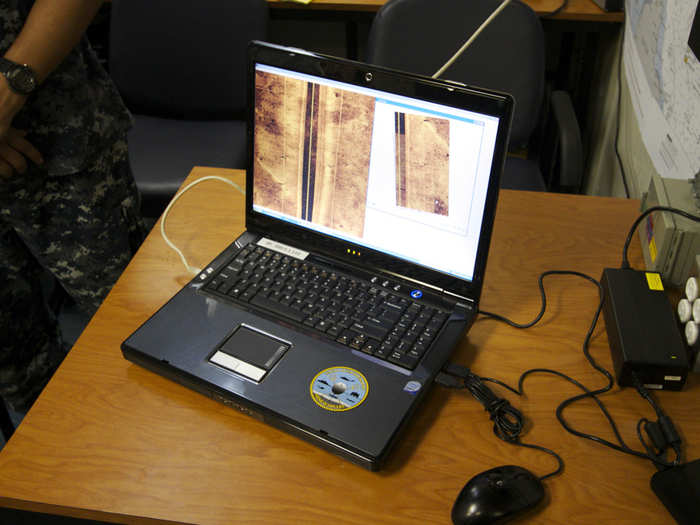
As well as some examples of what they often find out on the sea floor — to save time they can overlap new data with old — highlighting any changes helps but it's still a very time consuming process
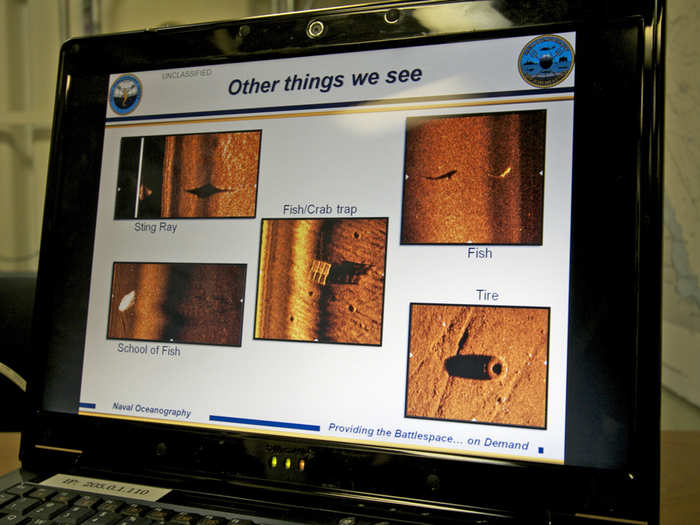
For every hour of video collected out here, inside teams will spend an additional hour going over the footage. Clearing the strait, one officer told me, could take years using one method alone

As we were getting rushed off back to Bahrain, I interrupted Shawn Reardon and Daniel McCarthy and asked them to show me the mine hunting technology on board we'd not seen
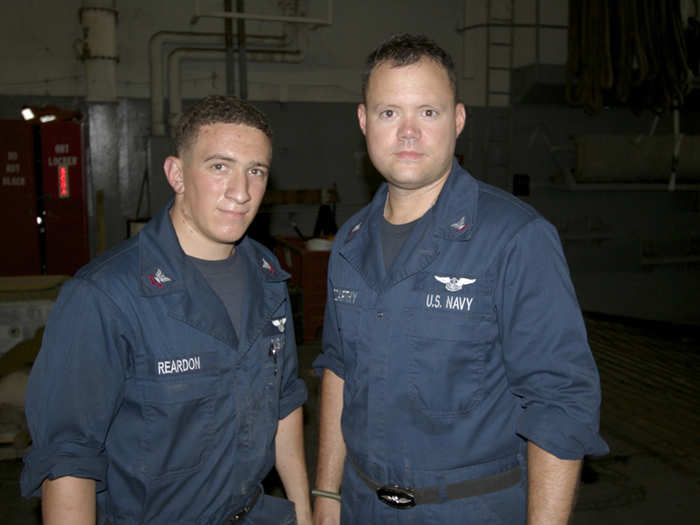
They pointed out the AN/AQS-24A Towed Side Scan Sonar
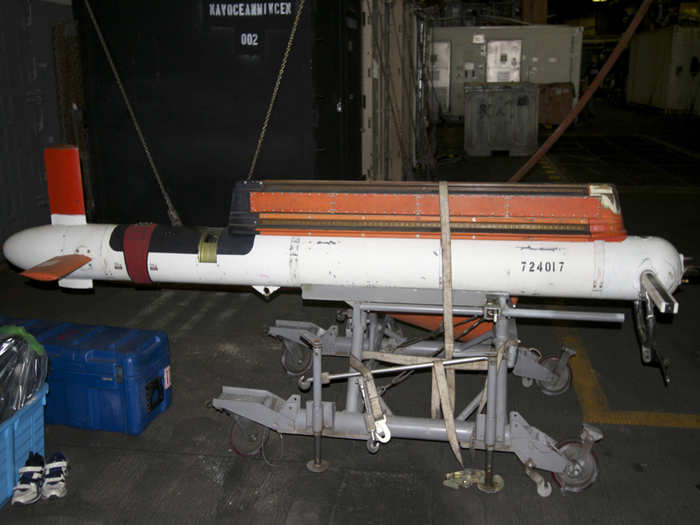
And the MK-103 mechanical mine cutting assembly that was still boxed up and waiting to be used
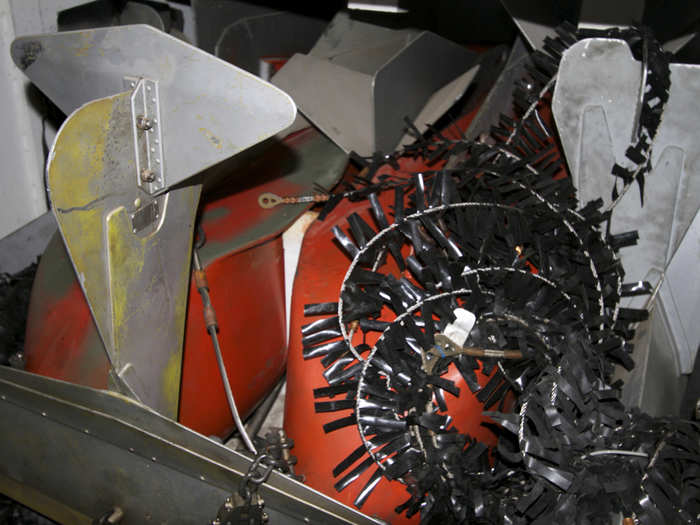
Then, just like that, we're herded back on the MH-53 for the ride back to Bahrain and on to the States

An initial flight just a bit hotter and more uncomfortable than you'd imagine

But behind us the day is far from over, as the mission to keep the Strait of Hormuz open to all commercial shipping continues

You've seen what went on around the USS Ponce >
 ' layout='fill' objectFit='cover' loading='lazy' width="700" height="400"/>
' layout='fill' objectFit='cover' loading='lazy' width="700" height="400"/>
Popular Right Now
Popular Keywords
Advertisement